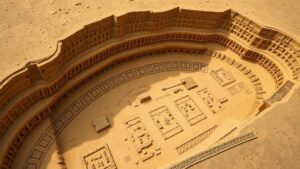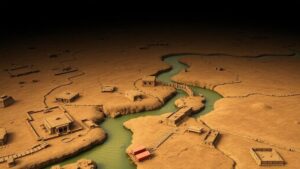How digital modeling allows us to reconstruct the lives of ancient explorers themselves.
How Digital Modeling Allows Us to Reconstruct the Lives of Ancient Explorers
Digital modeling has revolutionized the way historians and archaeologists study ancient explorers. Utilizing sophisticated software and technology, researchers can create virtual representations of historical figures, their environments, and their journeys. This article explores how digital modeling enables us to reconstruct the lives of famous explorers, enhancing our understanding of their contributions to history.
The Basics of Digital Modeling
Digital modeling involves the use of computer software to create three-dimensional representations of objects and environments. Such models can include everything from artifacts to landscapes, providing a vivid glimpse into how ancient explorers may have interacted with their world.
- Three-Dimensional Visualization: This allows historians to visualize ancient sites and tools as they may have appeared in the explorers time.
- Interactive Simulations: These enable experts to recreate journeys and navigation techniques used by explorers, allowing for a better understanding of their routes.
Notable Examples of Digital Reconstruction
Several high-profile projects have successfully utilized digital modeling to shed light on the lives of renowned explorers. One of the most striking cases is that of Christopher Columbus (1451-1506), whose voyages across the Atlantic are crucial to understanding European expansion.
- Exploratory Routes: Digital modeling software allowed researchers to simulate Columbus’s journeys from Spain to the Caribbean, mapping out potential routes based on prevailing winds and currents.
- Ship Reconstruction: By digitally reconstructing the Santa Maria and other ships, scholars can better understand the challenges faced by Columbus and his crew during transatlantic voyages.
The Impact of Technology on Research
Digital modeling not only enhances our understanding of specific individuals like Columbus but also provides insights into broader historical contexts. By integrating Geographic Information Systems (GIS) with digital modeling, researchers can analyze large-scale patterns of exploration.
For example, projects that model ancient trade routes can illustrate how explorers like Ferdinand Magellan (1480-1521) influenced global commerce. By mapping out his route around the world, researchers can visualize the exchange of goods, cultures, and ideas that followed his seminal journey.
Real-World Applications
The application of digital modeling goes beyond academic research. Museums around the world are utilizing this technology to create engaging exhibitions, allowing visitors to experience history interactively. For example, the Virtual Reality Experience of Magellan’s Circumnavigation at the Museum of Discoveries in Portugal immerses attendees in the high seas adventures of the famed explorer.
Addressing Concerns and Potential Questions
While digital modeling offers significant benefits, some historians express concern over the potential for inaccuracies. It is crucial for researchers to ensure that their models are built upon the most reliable historical data available. Techniques like cross-referencing multiple sources can mitigate these issues.
Also, there is a risk that audiences may perceive digital reconstructions as completely accurate representations of the past. Clear labeling and contextual information should accompany all models to clarify their speculative nature. This approach allows viewers to critically engage with the material rather than accept it at face value.
Actionable Takeaways
Digital modeling serves as a powerful tool for reconstructing the lives of ancient explorers, contributing to a richer understanding of their journeys and the historical ramifications. Here are some actionable takeaways:
- For educators, consider utilizing digital modeling tools in the classroom to bring historical topics to life.
- Students and researchers should explore GIS technology, as it provides the capacity to analyze historical data spatially.
- Museums can capitalize on digital technologies to enhance visitor engagement and understanding of historical contexts.
In summary, as technology continues to advance, the possibilities for exploring ancient history through digital modeling will only expand, offering deeper insights into the lives of explorers who changed the world.



